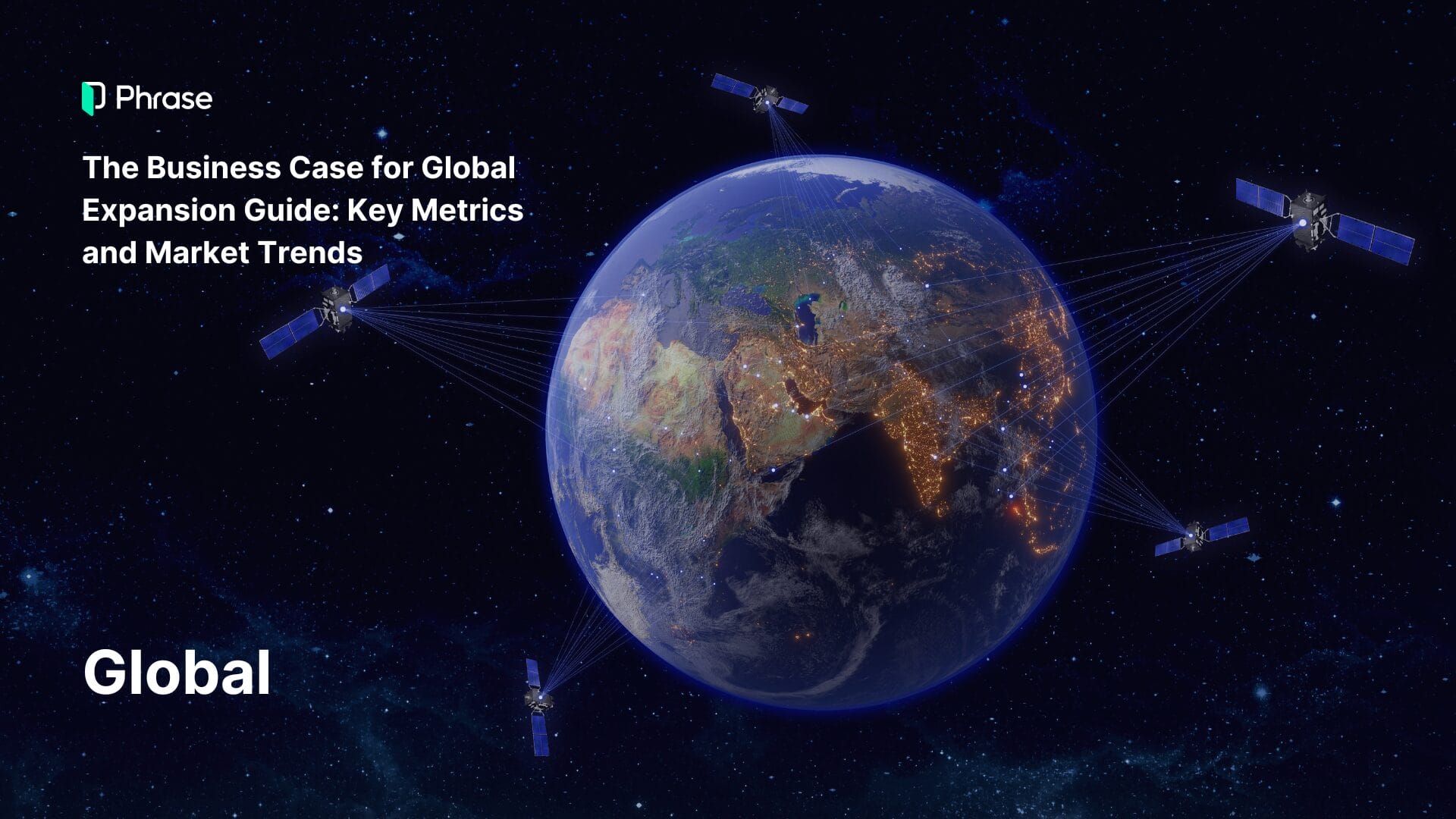Almost three years after OpenAI’s ChatGPT appeared on the scene, and with the hype surrounding it now fading away, as it became a routine tool for many businesses. It’s perhaps hyperbole to talk about the revolution of the localization manager’s role. It would be more pertinent to refer to it as a continuous evolution.
Many of the underlying currents shaping the role and place of the localization manager and their team in the wider organization. These currents include tech-driven automation of processes, supporting a shift left to product development, the imperative of internal alignment.
Such factors have been a constant fixture in the localization manager’s day-to-day for the past decade, well before large language models (LLMs) entered the picture.
For years, localization managers have been moving away from hands-on management of translation processes and vendors to spending more time in these areas. If anything, generative AI (GenAI) has accelerated this evolution.
Today, with a clear understanding of how AI integrates into broader language operations, we can see its role more precisely. Early experimentation and testing of GenAI solutions in established workflows highlight exactly how and where it impacts the work and strategies of localization leaders.
In this article, we’ll explore the diverse aspects of the localization manager’s role and how GenAI is shaping—or even accelerating—their evolution. We’ll also consider the future direction of this role within the modern, global enterprise.
The seven pillars of a localization manager’s role
Before assessing how GenAI impacts their work—and why we’re talking about an evolution instead of a revolution—let’s review the varied aspects of the localization manager’s role.
1. Day-to-day language operations
Localization managers are evaluated by getting the translation and localization work done, on time, within budget, and to the required quality standards. This is their primary responsibility.
Different companies will opt for different types of setup to get the work done. They may work with a dedicated language service provider (LSP), directly with freelance linguists, relying on an in-house team of translators, or a mix of any of these.
The setup also varies based on where the company is on its global growth trajectory. For instance, it is not infrequent to see startups operate with a single individual where the localization manager is the central cog of the company’s multilingual activity.
The key competencies to set up and run the ship are project management, a certain degree of tech-savviness to determine which pieces of language technology—think a translation management system (TMS) or machine translation (MT)—are needed and how to plug them into the company’s existing tech stack.
Additionally, communication and interpersonal skills as the localization manager will be dealing with fellow humans to get the job done.
2. Finances, analytics & reporting
Secondly, localization managers need to have solid financial management fundamentals and the wherewithal to collect data on the operation’s health.
This is a vital part of the job, as you need to be able to rely on and navigate data when having frequent mission-critical conversations with your peers whenever you need more budget, want to expand the team and onboard new help, or make the case for the importance of localization’s contribution to the company’s growth aspirations.
3. Strategic planning
The localization manager should be able to project into the future and plan for it. It is important not just to live in the present, day-to-day translation work, but to spend time to devise ways of improving or expanding the scope of operations.
The underlying assumptions are that
- The localization manager is doing their job with an eye toward growing in their role;
- The company will continue to grow and transform, and with it, so will the requirements placed on the localization team
Strategic planning for the future—and the ability to translate a vision into actionable steps—has taken on new significance as the rapid development and impact of GenAI compel us to rethink what our future workdays will look like.
4. Due diligence: technology & competitive intelligence
The localization manager needs to stay on top of their game. The very nature of localization, a traditionally end-of-the-chain process—and an afterthought for many companies—means localization managers are often fighting a battle for relevance. Incremental improvements, iteration, and thinking out of the box are important elements to strive for.
That’s why doing your due diligence, both on the tech side, and following what your peers and competitors are doing, is an essential source to push the envelope of what your team is doing or, at the very least, to provide that much-needed reality check.
5. Internal alignment
Internal alignment is perhaps the single most critical component of the localization manager’s role (other than ensuring the continuity of localization operations), as their successes and pathways to growth will heavily depend on their ability to talk to and align with stakeholders’ requirements and expectations.
In fact, over the past few years, we’ve seen a shift inward, with localization managers spending less time with their vendors and devoting more time to building bridges with stakeholders. Having cutting-edge automation in place certainly helps with this.
6. Thought leadership
The localization manager’s ability to reposition their work and that of their team as the growth enablers and drivers they are is paramount.
This may be an underrated part of the role and one there’s rarely time for, but promoting the successes of the localization team (e.g., at industry conferences) or internally at workshops and during all-hands presentations is vital to open eyes and raise the visibility of localization.
The localization manager who has aspirations to grow beyond their role must be able to absorb and apply the lessons from key, future-shaping trends driving the global industries onward—GenAI being one of them.
They should be capable of devising new, innovative strategies—and sharing them whether on the company’s blog or, perhaps, by publishing a book.
7. Continuous learning
We’ll touch on the importance of continuous learning later in the article, but the openness and desire to learn will set the localization manager and their teams up for immediate and long-term success.
One thing is certain—localization is anything but static, rapidly developing under the influence of new tech and growing business needs.
Today’s business world, with its pressures to innovate and grow, is pushing workers toward the path of lifelong learners.
The pursuit of automation and GenAI
One of GenAI’s key influences is helping to accelerate the company-wide push toward automation. At its core, AI is a productivity tool, allowing us to do more with less (and do it well) and diverting human expertise from repetitive and uninteresting tasks (e.g., file and instruction preparation and handoff) to added-value and career-boosting tasks (e.g., spending more time thinking strategically).
Naturally, the company is pursuing AI, leaving the localization manager and their team with little choice but to follow suit.
Automation: old news for the localization manager?
Automation is nothing new for the localization manager. Conventional TMS tech is already built with automation in mind, linking product and content development tools and environments directly with translators in one continuous localization loop.
In this context, GenAI is not necessarily a novelty, especially considering that AI has been around for a while. This is an important misconception to dispel.
MT—arguably the single most transformative piece of language technology before GenAI came around—has seen increasing adoption over the past half-decade.
Today, it has achieved a degree of maturity and sophistication (without sacrificing ease-of-access) where it can provide human-parity levels of translation quality in specific contexts and usage scenarios.
What does this mean for the localization manager?
Explore how localization managers play a crucial role in using AI ethically within the translation industry, balancing automation with cultural sensitivity, and addressing issues like bias and transparency to safeguard translation quality and inclusivity.
The GenAI ripple effect
The key challenger is articulating the benefits of how the program has been structured to stakeholders within the organization who are now fully invested in AI. Let’s examine:
- The rise of GenAI, with its ability to translate content at scale, has brought unprecedented attention to localization teams. The question arises: why invest in localization when GPT-like tools can do it faster and cheaper?
Many localization managers share that proving they’ve already achieved similar results with MT is crucial. In a sense, GenAI has become one of the strongest advocates for MT. While the debate over whether MT or LLM-based translations is superior is important, it’s beyond the scope of this article.
What matters is that today’s localization managers must be able to assess which technology to use—or not use, or even combine both—and clearly explain the rationale behind their decision. - The attention AI is garnering from different parts of the organization means that localization managers need to rely on their own research, testing, and showcasing the results of their experimentation to demonstrate how they’ve been able to do things before and what the relative merits and limitations of deploying GenAI are.
Data is the ultimate trump card that gets people on board, secures buy-in and enables progress. The implication for the localization manager—and one of the key byproducts of the GenAI evolution—is to be proactive in experimentation and pursuit of data. The notion of proactivity emerges as key for localization managers.
Coexisting with GenAI
For localization managers today (and indeed the entire industry), there is no going back to life without GenAI. The conversations they are having may be situational and context-dependent, they often follow a familiar, recurring pattern that can be distilled into the following sequence::
- A variation of the following question coming from stakeholders above or those in other horizontal parts of the organization of “Have you used this for translation?” and if not, then the follow-up “Why?”
- The data- and experiment-backed response to the previous question highlights why yes/no and what the current possibilities and limits are. The most important element in this conversation is the localization manager’s approach: it’s a prime opportunity to showcase expertise and initiative or to include bring in new experts who can help drive the conversation forward.
- The conversation is over; what remains is:
- Persevering on the track of fine-tuning present GenAI use cases or working toward a situation where you deploy it in real-life production (assuming the localization team opted for its inclusion).
- Continually learning and keeping up to date with the latest developments to sustain expertise and credibility. This calls for a change in habits, making research and learning a core part of the localization manager’s (and their team’s) work.
What is emerging from the experiences of localization managers is that this loop will keep repeating itself as with GenAI, translation, and localization are being introduced to new people in the wider organization. Being able to explain and articulate the different ways of how the localization program is set up is essential.
Let’s now examine the transformational opportunities GenAI brings for the localization managers and their teams.
Product development and localization shifting left
A trend predating GenAI’s arrival is the effort of localization teams to move further upstream and closer to product design—the shift left—strengthening the bonds with product developers, designers, and UX researchers. This has been more pronounced in certain industries, such as software development, where products are built with global audiences in mind.
The underlying premise is that localization teams can contribute not only to the transformation (i.e., translation) of content into a multitude of languages but also partner in creating it. Who better to help design content for a global, multilingual audience than the specialists who have expertise in linguistic, social, and cultural areas and can help create locally impactful content?
Content creation and the GenAI opportunity
When creating content for a multilingual audience in a source language and then translating it, scale and timeliness can quickly become challenges. Over the past decade, MT has developed as a key technology to help with the content explosion brought about by the multiplication of platforms and media formats and the broadened access to the Internet for hundreds of millions of users.
Yet MT remains, by and large, a technology of transformation, as opposed to a technology of creation. Enter GenAI, of which ChatGPT is the most well-known example.
GenAI’s capability to create multilingual content in a way fast-tracks the effort of localization managers who strive to build bridges with content creation teams.
With GenAI, bridge-building has jumped to the top of the to-do list, especially because multilingual content creation is, in theory, now within easy reach of anyone in the organization. This impacts the localization manager in several ways:
- The question of centralizing content creation and transformation under the localization team’s umbrella urgently needs an answer, especially for companies in the early stages of structuring their localization operations.
However, this is also valid for already well-established teams in companies where localization has been decentralized. For them, the question becomes how to integrate and use GenAI in a consistent, controlled, and safe way across the different business units that have been producing content on their own. - As mentioned earlier, one key way localization managers can—and arguably should—join the AI conversation within their company is by showcasing their expertise in language AI. Feedback from localization managers we collaborate with indicates that they’ve positioned localization as a natural safeguard for AI implementation.
Localization specialists are well-equipped to identify where GenAI excels and where it requires more oversight to prevent any negative impact on the customer experience—assuming they’ve done their due diligence and tested it thoroughly.
- There are inherent risks for a brand that uses publicly accessed GenAI platforms without proper safeguards in place, and localization managers should play a key role in setting these guidelines.
This isn’t just a matter of mitigating risks or prioritising concerns—it’s about ensuring the right framework is established. Here are a few critical areas where the localization team must provide input when using publicly accessible GenAI tools for content creation. - Confidential information could be used to train public language models or unintentionally appear in the output.
- Companies need a quality control system for high-visibility or sensitive content, where errors—or worse, hallucinations—are unacceptable.
- Public language models are prone to perpetuating bias, making it essential to have strategies in place to mitigate this.
No tech-forward without human-first
The rise of AI technology has intensified the scrutiny around the role of humans in the localization process. This goes beyond concerns about job displacement for project managers or linguists.
The real impact of AI lies in how it pushes companies to rethink and redefine the role of humans in the production chain. Crucially, this redefinition won’t happen without meaningful human-to-human discussions aimed at finding solutions.
Consider the following:
AI didn’t just materialise out of thin air—it was created by humans. Without human effort, the groundbreaking developments, hype, and solutions of the past two years wouldn’t exist. As a result, it’s up to humans, particularly localization managers, to determine where AI fits and how it can enhance traditional processes.
Achieving this won’t come from conversations with ChatGPT; it will require meaningful dialogue between people.
To be tech-forward, you must be human-first. With AI, humans’ interpersonal skills, such as communication and education, are pushed onto the scene and can significantly affect the success of any AI initiative.
As highlighted in the article, alignment is the main focus of the localization manager today. Done right, automating traditional localization processes with the help of AI—whether using MT or LLMs—frees up precious time and resources to establish dialogue with other parts of the organization and work together toward solutions to common goals.
Understanding AI in Localization: A Phrase Glossary

Whether it’s a neural machine translation engine, a large language model, or an automated quality assessment feature, this resource helps ensure a shared understanding of evolving AI terminology, both within Phrase, and across the wider localization industry.
What are the pathways the localization manager can take?
The global industry is heading toward more AI, not less. It is a safe bet that AI—whether through MT or LLMs or whatever the next developmental step in AI will be called—will feature in the localization process in some way. That doesn’t mean there isn’t space for humans in the loop, or indeed, at the core of the system, pressing the buttons and piloting the AI for maximum effect. Our near future is heading the way of humans needing to find a way to coexist with the machine. The human-AI symbiosis will define the next decade and beyond.
For the localization manager, this means embracing the tech and using the time tech frees up for distinctly human endeavors—building bridges with other humans and continuously learning to expand their horizons.
Embrace the AI opportunity
AI is an opportunity. Localization managers should be proactive about seizing it and developing their AI-focused initiatives.
At Phrase, we believe in the transformational power of AI and have been heavily investing in research and development to build the next generation of AI-infused tools that anyone in the localization process—from localization managers to project managers to translators and post-editors—can use for enhanced efficiency and creating impactful localized content.
We see AI not as a disruptive force to be managed, but as an accelerant of the evolution already underway in localization. Our focus has been on developing tools that reflect how work is actually done, where people remain at the center and AI becomes a mechanism to extend their reach, not replace their judgment.
For example, we recently added several features to Phrase Orchestrator and Auto Adapt that are built on this principle. Validated Prompts for example, allows teams to define, test, and refine how generative AI is used within specific workflows. This makes it easier to explore AI without sacrificing quality, consistency, or control. The aim is not to follow trends but to make real-world experimentation safe, grounded, and adaptable.
Increasingly, the balance between human insight and automation is becoming one of the defining responsibilities of the localization function. Our work is focused on supporting this shift—not by removing humans from the loop, but by giving them the space to focus on higher-impact areas like strategic planning, stakeholder collaboration, and continuous learning.
Today’s localization managers are not just delivering translations. They are shaping how language connects with business strategy. That calls for curiosity, clarity, and the right tools to help move things forward.
Become a lifelong learner
With AI, language industry professionals don’t have a choice. AI is pushing us to change our habits and develop new ones. One of the ways humans differ from machines is in our ability to redefine ourselves.
Learning and refining their technology knowledge and putting it to the test is how localization managers and their teams can solidify their place in the AI (r)evolution and keep ahead of the curve.
Phrase Language AI
Learn how Phrase Language AI ensures you always use the best technology for your specific translation content and use cases








